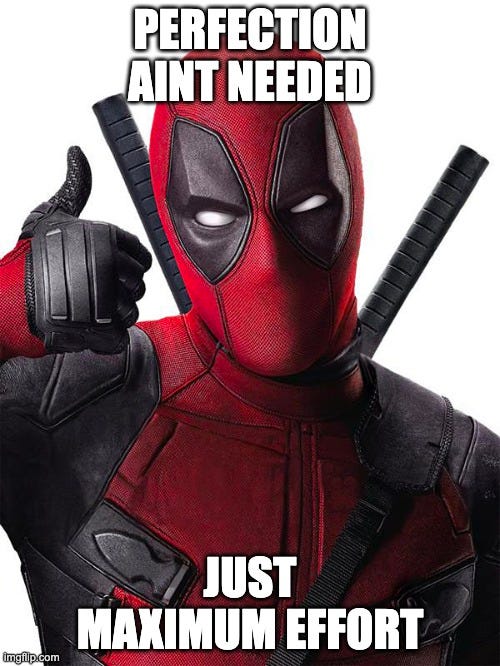The Whys in your Statement Of Purpose (SOP)
Since we have completed the introduction and experience, we have roughly covered 2/3rd of the statement of purpose (if you have not read…
Since we have completed the introduction and experience, we have roughly covered 2/3rd of the statement of purpose (if you have not read the earlier articles in the SOP series, find them here). The introduction section catches the attention of your audience. The experience section details your future goals and your preparation thus far to achieve them.
The next section, which we call the “Whys” section, will dive into the three key whys the admission committee is looking at
Why did you choose this program?
Why did you select this university?
Why should the university choose to accept you over other candidates?
Let’s tackle them one by one

Why this program
When explaining the reason/s for choosing a program there are a few approaches you can run with
Research Approach — emphasise the opportunity to take independent research as coursework (if it exists), or the amount of time you get to spend on your thesis (if that is allowed) either of which should tie into the goals you mentioned in the experience section.
Skill building Approach — emphasise the coursework and the ability to build/improve the skills required to achieve your goals mentioned in the experience section.
Network Approach — emphasise the opportunity to work with professors and the peer group that you would have access to as part of the program.
For example, consider the snippet from a SOP below (variablized certain details)
“I plan to extend my research, focusing on GPT generators to develop models that can support a student’s learning process. The <PROGRAM NAME> program with an intense 20-month professional track, highly motivated peer group, and a rich selection of electives covering Deep Nets for NLP and Advanced Optimization for NNs provides the best platform for my research goal. <PROGRAM NAME> also offers a unique <SPECIALISATION NAME> specialisation with courses on the design of large-scale peer learning systems and educational data science that would be a perfect fit for me to achieve my aim of building ML models that tailor-fit online courses to users.”
Why this university
When emphasising why you chose a particular university you can again have a few approaches that focus on the broader, university-level resources i.e.
Lab Approach — focus on labs that are present in the university that aligns with the goals you mentioned in your experience. A key thing to remember here is that all labs in your university are not engaged in core research efforts. If you are someone whose goals are more industry oriented, you can find labs that partner with companies to build products for real-world customers.
Network Approach — focus on the broader peer groups (across schools in the university) and professors you have access to as part of the university. A good way to show how you will develop this network is by mentioning the student clubs (which align with your field of interest) that you will join. Student clubs are informal spaces where people from different programs can interact, learn from each other, and develop.
For example consider a snippet from a SOP below (variablized certain details)
“Additionally, the <PROGRAM NAME> program, hosted in the <SCHOOL NAME>, has a vibrant research community, with several investigations on similar lines to my own. Specifically, work pursued by Professor <PROFESSOR NAME> with <PROJECT NAME> within <LAB NAME>, focusing on developing cognitive models for knowledge discovery would prove invaluable to me. I also believe my experience in understanding online interactions and their influence on the learning process in MOOCs would provide a unique perspective to the project making me an ideal fit for the program.
Apart from the research efforts, I want to contribute to the <OPEN SOURCE PROJECT IN UNIVERSITY> project by extending the RankLib library and join the <CLUB NAME> to work on live data sets to solve problems around the city.”
Something you must avoid doing in this section is emphasizing the ‘prestige’ of the university in anyway. It does not come across as well thought out. The admission committee would interpret it as ” the candidate is aiming for this university only because it is well-known.”
Before moving onto the next ‘why’, I strongly recommend you draft the content for the previous two.

And we’re back! The last ‘why’.
Why should this university choose you
The final ‘why’. While I have made this a separate ‘why’, the content for this section is already written by you in the previous ‘whys’! This is because, throughout this process you have put your career goals and aspirations onto paper. I promise even if we take all the SOPs written thus far in history, your SOP will stand out to be unique. So have faith in what you have written. Read through the previous whys and figure out what your career goal is, and how you determined you could collaborate with the people at the university (lab/professor/peer group) to achieve it. Why the university should choose you, is the unique value you bring to those collaborations.
For example, see this sentence in the SOP snippet we saw earlier.
“Specifically, work pursued by Professor <PROFESSOR NAME> with <PROJECT NAME> within <LAB NAME>, focusing on developing cognitive models for knowledge discovery would prove invaluable to me. I also believe my experience in understanding online interactions and their influence on the learning process in MOOCs would provide a unique perspective to the project making me an ideal fit for the program.”
Call out such unique values you can bring to the university within the ‘why’ section you have already written.
Now that you know what to write in this section you still may have a few questions when editing this section, such as — “Well how long should I make this section”, “How many reasons should I put in for each of the whys”.
In terms of length this section should not be more than two paragraphs. The section is not meant to be as detailed as the experience section, so keep it succinct.
When it comes to the number of reasons, a good rule of thumb is “Never more than three” (for each ‘why’ individually). Ideally you want to aim for one reason and detail it. However it’s hard to be a perfect fit with every university you want to get into (I was definitely reaching). So when you feel like no particular reason you have is strong, it’s ok to add an additional one or two(but never more than three) to make a better case.

To summarise
For why this program? Think about the research opportunities, network or skillset you can build
For why this university? Think about the broader university level resources i.e. that labs in the university, and peer groups/mentors available across campus
For why you? Realise your career goals and path to achieve them are unique. So dig into them and realise what unique value add you bring.
Coming up next in the SOP series, the final section : Concluding your Statement of Purpose (SOP)
If you like to see more of such content do leave a few claps (no upper limit 😁).
If you are looking for free one-on-one mentorship please follow me on Medium and LinkedIn and drop a message on LinkedIn.

